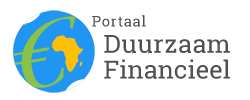Western Europe continues to lead the world’s financial centres in green finance with Amsterdam on top. This may reflect the work being undertaken by the European Union on strategy, regulation, and measurement; and the work of central banks in Europe to embed sustainability in their regulatory work.
Standards Are Improving Around The World
Ratings of green finance rose in almost all centres for both depth and quality. With one exception, all centres received a higher rating for quality than in GGFI 3. Average performance across the measures of green finance depth and quality increased, with the average rating rising 2.2% for depth and 3.8% for quality compared with GGFI 3.
Smaller Centres Are Specialising – Will The Giants Lose Out?
Amsterdam retained its leading position in the depth index, with Luxembourg regaining the ground it lost in GGFI 3 to take second place.
London retained its position as first in the quality index, albeit with a smaller margin than before, with Amsterdam overtaking Paris to rank second.
On current trends, London would lose its top ranking for quality within the next 12 months. It is worth noting that the UK has fallen behind a number of other countries by not yet issuing a sovereign green bond. This may affect perceptions.
The evidence in this report suggests that larger, well-established centres are not generally those which are rated highly as green financial centres. For example, New York, which tops the ranking of financial centres competitiveness in the Global Financial Centres Index, and which has extensive green tech listings on its exchanges, ranks 41st for depth and 29th for quality in GGFI 4.
The top 20 ranked centres for depth and quality are shown in the table below
 |
Biodiversity
Awareness and concern about biodiversity risk within the financial services sector is still at an extremely low level, despite its potentially catastrophic impacts on financial asset values, the economy, and the planet.
If finance is to help reduce biodiversity loss, policy makers must act quickly to:
- embrace common environmental metrics and disclosure practices;
- develop tools to internalise environmental costs;
- encourage the flow of private finance to protect biodiversity;
- phase out environmentally-harmful subsidies; and
- increase public financing for ‘unbankable’ conservation projects.
Leading Centres
- On depth, the top 10 centres all stayed in the top group, with some minor adjustments in placing. Hamburg continued to progress, moving up three places in the rankings to equal 7th with Paris. Zürich fell three places to 5th following a sharp rise in GGFI 3.
- On quality, Brussels displaces Geneva to move into the top 10. London’s lead in the quality index has reduced from 52 in GGFI 1 to 18 in GGFI 4.
- Narrow margins continue to separate centres at top of the tables. Among the top ten centres the spread of ratings is 47 out of 1,000 for depth (37 in GGFI 3) and 53 for quality (60 in GGFI 3).
Western Europe
- Western Europe continues to improve its ratings across depth and quality, with all but one centre receiving improved ratings for both depth and quality.
- Munich rose nine places to 11th in the depth index, while Rome improved six places to 31st.
- Liechtenstein gained eight places in the quality index.
- Milan, Dublin, and Guernsey fell in the rankings for both depth and quality.
North America
- San Francisco was again the leading centre for quality in North America, retaining its 11th place in the index. It also increased its ranking by seven places to 17th in the depth index. Montréal again took first place in the region for depth, at ninth position overall and rose five places to 13th overall for quality.
- Calgary and Chicago both improved their position in the rankings for both depth and quality.
- Canadian centres continue to outperform the USA both in depth and quality.
Asia/Pacific
- Asia/Pacific centres overall fell back in the rankings for both depth and quality, even though ratings improved slightly overall, meaning that other centres improved their performance at a faster rate.
- Shanghai retained its leading position in the region for depth, with Guangzhou improving five places in the depth rankings to 17th overall.
- Melbourne and Sydney lead the region for quality.
Middle East & Africa
- Casablanca consolidated its reputation as the regional leader, retaining its 13th place in the overall rankings for depth and placing 17th in quality.
- New entrant Tel Aviv took second place in the region and ranked 30th for depth and 25th for quality.
- Other centres in the region generally lost ground in the rankings, although ratings generally improved.
Latin America & The Caribbean
- São Paulo retained its leading position in the region and rose three places in the rankings for quality. Further analysis of the city’s approach is contained in the GGFI São Paulo case study published in May 2019. Cayman Islands rose to second place in the region for depth.
- The British Virgin Islands and Mexico City fell in the rankings for both depth and quality.
Eastern Europe & Central Asia
- Prague consolidated its position as the regional leader and retained its ranking at 22nd overall for quality.
- Warsaw fell in both the depth and quality rankings; and Istanbul and Moscow both improved their position in the depth rankings.




